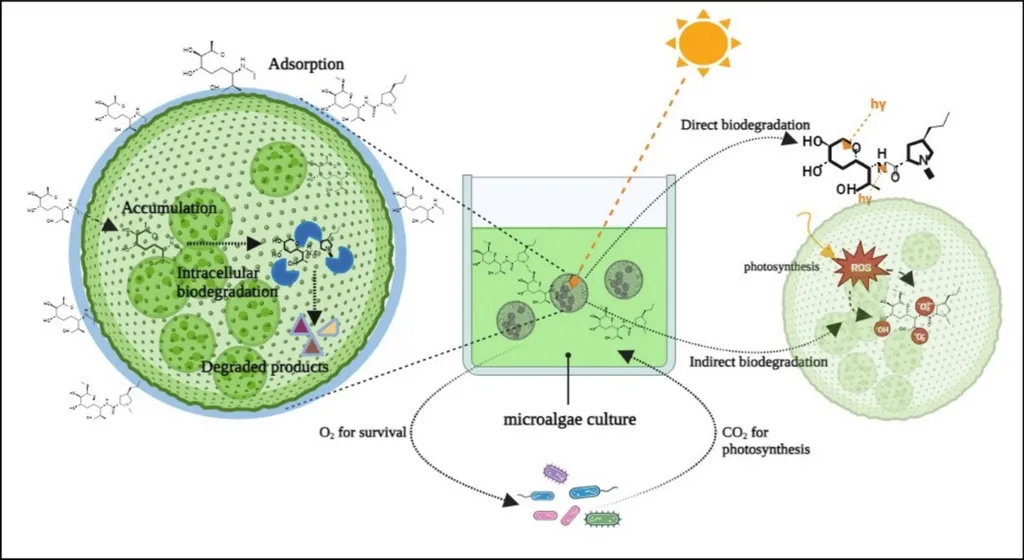In a groundbreaking development that could revolutionize water treatment and bioenergy generation, researchers have successfully combined photocatalysis with sediment microbial fuel cells (SMFCs) to tackle antibiotic pollution in aquatic environments. The study, led by Muhammad Usman from the State Key Laboratory of Soil and Sustainable Agriculture at the Chinese Academy of Sciences, introduces a novel photocathode that not only degrades azithromycin (AZI) but also enhances bioelectricity production.
Azithromycin, a commonly used antibiotic, has been found in alarming concentrations in water bodies worldwide, posing significant risks to aquatic ecosystems and human health. Traditional treatment methods often fall short in addressing this persistent pollutant. However, the innovative approach detailed in the study published in *Desalination and Water Treatment* offers a promising solution.
The researchers developed a heterojunction photocatalyst, Cu-N-TiO₂/g-C₃N₄, coated onto a graphene conductive material (GCM). This advanced photocathode was integrated into SMFCs, which harness the natural processes of sediment-dwelling microorganisms to generate electricity. The results were striking. Under natural sunlight, the Cu-N-TiO₂/g-C₃N₄ photocathode achieved an impressive 84.73% degradation of AZI, outperforming pure g-C₃N₄ and Cu-N-TiO₂, as well as the control group.
“This study identifies sunlight-driven SMFCs with customized heterojunction photocathodes as a potential, synergistic technique for the effective cleanup of antibiotic-contaminated water,” said Muhammad Usman, the lead author of the study. The enhanced heterostructure’s narrower bandgap of 1.02 eV significantly improved its visible-light absorption capability, making it a highly efficient catalyst for degrading AZI.
The integration of photocatalysis with SMFCs not only addresses the pressing issue of antibiotic pollution but also offers a sustainable method for bioelectricity generation. While AZI stress initially reduced microbial diversity and hindered energy production, the improved photocathodes enabled sustained bioelectricity generation, highlighting the potential for dual benefits in water treatment and energy production.
The commercial implications for the agriculture sector are substantial. Agricultural runoff often contains antibiotics and other pollutants that can contaminate water bodies, affecting both ecosystems and human health. The adoption of this technology could provide farmers and agricultural businesses with an effective tool to mitigate pollution and potentially generate additional revenue through bioelectricity production.
“This research opens up new avenues for developing sustainable and efficient water treatment technologies,” Usman added. The findings suggest that sunlight-driven SMFCs with customized heterojunction photocathodes could be a game-changer in the field of environmental remediation and bioenergy generation.
As the world grapples with the challenges of pollution and sustainable energy, this innovative approach offers a beacon of hope. The study’s success in degrading AZI and generating bioelectricity underscores the potential for similar technologies to address a wide range of environmental and energy challenges. The research, published in *Desalination and Water Treatment*, represents a significant step forward in the quest for cleaner water and sustainable energy solutions.

